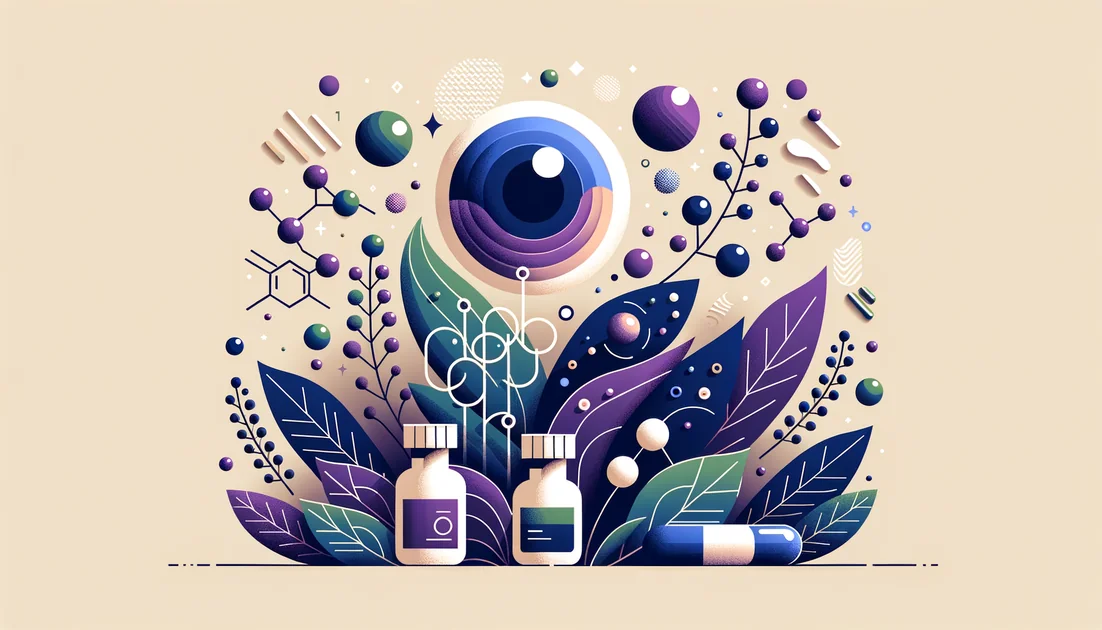
From Pellagra to Performance: How NAD+ Turned a Hidden Deficiency into Today's Longevity Quest
A century ago, a mysterious rash, diarrhea, and dementia swept through the American South. Doctors blamed germs—until a public-health maverick fed prisoners a corn-heavy diet and proved the real culprit was a missing nutrient that fuels every cell's engines: the vitamin precursor to NAD+. Today, the same molecule sits at the center of a different mystery—can carefully raising NAD+ help us age better without overpromising? [3][4]
- Evidence
- Promising
- Immediate Effect
- Within days (NAD+ biomarkers rise) → 6-12 weeks for vascular/functional measures in trials
- Wears Off
- 2-4 weeks after stopping (biomarkers likely toward baseline)
The cofactor behind the curtain
When British biochemists Arthur Harden and William Young boiled yeast in 1906, they accidentally split fermentation into two parts: fragile proteins and a heat-stable "co-ferment." That stable helper—later purified and named nicotinamide adenine dinucleotide, or NAD+—turned out to be the tiny courier that shuttles electrons so cells can make energy. Otto Warburg would show in 1936 that the nicotinamide end of NAD+ does the actual electron-catching—like a handoff in a relay race that keeps metabolism moving. [1][2] Three decades later, another story unfolded in orphanages and prison farms. Physician Joseph Goldberger noticed pellagra struck hardest where diets were monotonous. He didn't spread it by "filth parties" or injections; he prevented it by changing food. In 1937, niacin (vitamin B3), a dietary building block for NAD+, was identified as pellagra's cure. Nutrition, not contagion, saved lives. [3][4]
Why NAD+ is back in the spotlight
Fast-forward. Scientists realized NAD+ is more than an energy courier. It's also the "currency" consumed by repair crews—enzymes that mend DNA, tune cellular defenses, and coordinate day-night rhythms. But NAD+ declines with age—partly because chronic, smoldering inflammation turns on an enzyme called CD38 that chews it up. "Filling the sink without dealing with the leak will be insufficient," says Eric Verdin, MD, president of the Buck Institute, explaining why simply pouring in precursors isn't a cure-all. [11] That "leaky sink" metaphor reframed the field: raising NAD+ may help, but tackling the leak (inflammation, overactive NAD-eaters) may matter just as much. Meanwhile, researchers began asking a practical question: can oral precursors—molecules our cells convert into NAD+—safely nudge levels upward and translate into real-world benefits?
What happens when people take an NAD+ precursor?
- In 2016, a first human pharmacokinetic trial showed that a single dose of the precursor nicotinamide riboside (NR) raised the human NAD+ metabolome in a dose-dependent way. "This trial shows that oral NR safely boosts human NAD+ metabolism," said lead investigator Charles Brenner, PhD. [5][6]
- In 2018, a double-blind crossover study in healthy older adults found eight weeks of NR was well tolerated and increased NAD+ pathways. Exploratory outcomes hinted that those with mildly elevated blood pressure saw reductions and less arterial stiffness. Senior author Doug Seals put it plainly: "We found that it is well tolerated and appears to activate some of the same key biological pathways that calorie restriction does." [7]
- Not every headline holds: a 12-week RCT in obese, insulin-resistant men found NR did not improve insulin sensitivity or body composition—important ballast against hype. [9]
When a lab finding becomes a walking test
The biggest step toward functional benefit came in 2024. In the NICE randomized clinical trial of 90 people with peripheral artery disease (PAD), six months of NR improved six-minute walk distance versus placebo—about +18 meters overall, and ~+31 meters among adherent participants. Resveratrol didn't add benefit. It's a modest but meaningful gain for a condition with few easy options, and the authors call for larger trials. [10] Early disease targets are also being explored. In heart failure with reduced ejection fraction, high-dose NR approximately doubled blood NAD+ and correlated with improved immune and mitochondrial markers—primarily a safety/feasibility milestone, not proof of outcome change. [8]
A surprising battlefield: infections, immunity—and trade-offs
Viral infections can drain the cellular NAD+ pool as antiviral enzymes spend it to slow replication—prompting some scientists to describe infection as an "NAD+ battlefield." In preclinical work, replenishing NAD+ precursors strengthened aspects of this innate response and reduced replication of a PARP-sensitive coronavirus strain, a clue (not a prescription) that NAD+ status can shape immunity. [12] But there's a paradox worth respecting. Many tumors are ravenous for NAD+, which they need to grow. That's why drug developers have tested NAMPT inhibitors (which block a key NAD+ salvage step) to starve cancers of this fuel. A 2022 animal study even suggested NR could accelerate brain metastasis in a specific breast-cancer model—an early, controversial finding that shouldn't be overgeneralized, but it keeps researchers cautious. [14][13]
"Some tumors use increased levels of NAD to grow..There could be increased cancer growth from it, but we don't know for sure," Verdin noted, urging prudence when giving NAD-boosters to healthy people. [11]
The NR–NMN–niacin question, and the rules of the road
Several precursors can feed NAD+: niacin (can cause flushing), nicotinamide (in high doses may blunt the very repair enzymes we'd like to help), NR, and NMN. NR has multiple human RCTs showing it raises NAD+ safely; NMN research in humans is growing but entangled in U.S. regulatory disputes, and some retailers removed NMN after the FDA indicated it falls under a drug-investigation rule. Evidence is evolving, but availability differs. [15][16] Mechanistically, scientists still debate how each precursor enters cells and in which tissues each works best. That's part of the intrigue—and why results can diverge by health status, dose, and duration.
A patient story from rare disease
In ataxia-telangiectasia, a devastating pediatric condition, a case report described an early-treated child whose motor scores and infections improved over 11 months on NR, without reported adverse effects. It's a single story—not proof—but it hints at where NAD+ restoration may matter most: when a pathway is profoundly stressed. [17]
Practical takeaways without the hype
- Who seems to benefit most so far? Older adults with above-normal blood pressure and vascular stiffness; people with PAD seeking small gains in walking capacity; select clinical populations under study. [7][10]
- What about safety? NR has been well tolerated across trials up to gram-level dosing over weeks to months; high-dose nicotinamide (a different B3 form) can inhibit sirtuins and stress the liver at pharmacologic doses. As always, discuss medications and conditions with a clinician. [6][11][18]
- What helps the "leaky sink"? Address inflammation, sleep, movement, and metabolic health; these lower the drain on NAD+. Raising levels while the leak gushes may disappoint. [11]
The older lesson beneath the new science
Pellagra taught us that a molecule you can't see can shape a human life. Today's NAD+ story is more nuanced: we can raise NAD+, and in some contexts it appears to help; in others, it doesn't—or could, in theory, help the wrong cells. The responsible path is curiosity with guardrails: keep testing where benefits show up, keep asking where they don't, and never confuse a promising cofactor with a cure. Brenner's early line still holds: "oral NR safely boosts human NAD+ metabolism." The rest of the sentence is being written now—carefully, in six-minute walks, blood pressures, and the quiet repair work of cells we're only beginning to hear. [5][10][7]
Key takeaways
- •NAD+ is the cell's electron-shuttling cofactor that underpins energy production and repair, a role traced from early fermentation experiments to Warburg's insights.
- •Human trials show oral NR safely raises NAD+ metabolites in a dose-dependent manner, with benefits emerging over 6–12 weeks.
- •In peripheral artery disease, 6 months of NR improved six-minute walk distance versus placebo; adding resveratrol didn't help.
- •NR has limits: a 12-week trial in obese, insulin-resistant men showed no improvement in insulin sensitivity.
- •Practical use mirrors trials: 300–1,000 mg/day NR, often split morning/evening with meals to keep levels steady and avoid niacin-type flushing.
- •Caution zones: active cancer (tumors can be NAD-hungry) and very high-dose nicotinamide, which may inhibit sirtuins and stress the liver.
You might also like
Explore more of our evidence-led investigations, comparisons, and guides across every article style.

Nature's Truth
Nature's Truth: Retail leader with selective third-party certifications—and a transparency gap


Best for joint pain
UC-II (undenatured type II collagen) — 40 mg daily

Docosahexaenoic acid (DHA)
You've heard the myth: fish oil makes geniuses and saves hearts. Then you meet a neonatologist who says, "I don't need myths—I watched a molecule change the NICU." The paradox is real: in healthy adults, DHA can be underwhelming; in the earliest weeks of life, it can be the difference between fragile eyesight and crisp vision, early birth and time enough to grow.[2][4][8]

Calm Focus Unlocked: Kill The Jitters
Real but modest, short-term benefits with a "gas pedal + steering" effect; best for focused tasks, not all-day stimulation.

Tocotrienols
The stealthier cousins of vitamin E—built with springy tails that move differently in cell membranes and behave differently in your body.
